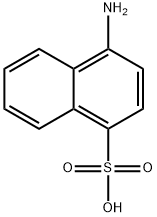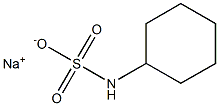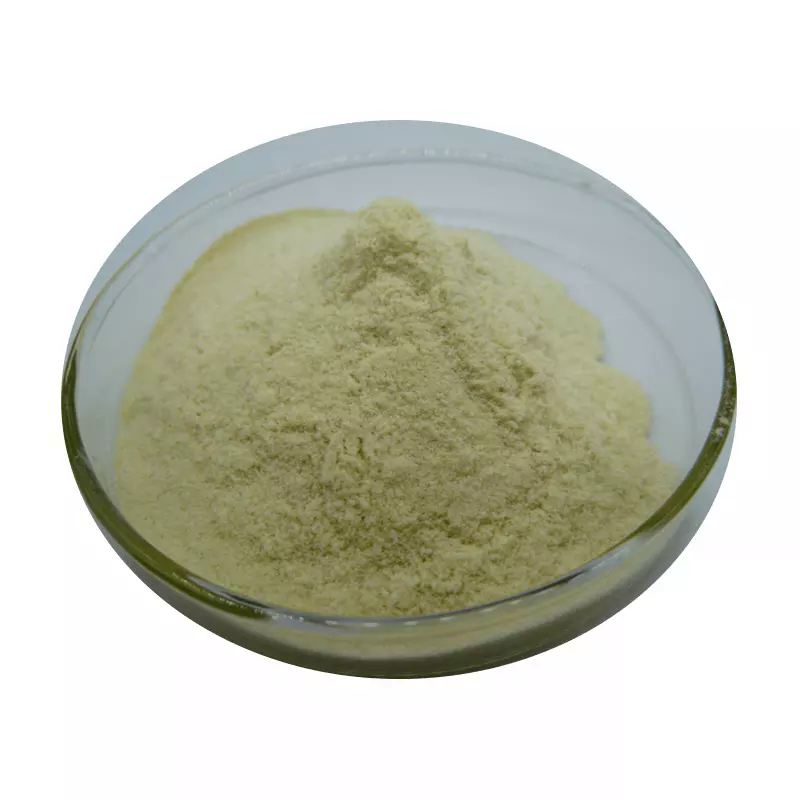Naphthionic acid
Synonym(s):1-Naphthylamine-4-sulfonic acid;Naphthionic acid
- CAS NO.:84-86-6
- Empirical Formula: C10H9NO3S
- Molecular Weight: 223.25
- MDL number: MFCD00004027
- EINECS: 201-567-9
- SAFETY DATA SHEET (SDS)
- Update Date: 2025-01-27 09:38:02

What is Naphthionic acid?
Chemical properties
?slightly greyish to beige powder and granules. 1-Aminonaphthalene- 4 -sulfonic acid [84- 86-6]. (4-aminonaphthalene-1-sulfonic acid), naphthionic acid, Piria’s acid, C10H9NO3S, Mr 223.24, is sparingly soluble in water (0.25 % at 100℃), but the sodium, potassium, calcium, and barium salts are all readily soluble. Chlorination of 1-Aminonaphthalene- 4 -sulfonic acid with copper(II) chloride produces 4-chloro-1-aminonaphthalene, whereas the action of chlorine on an aqueous sulfuric acid solution gives 2,3-dichloro-1,4-naphthoquinone. High-temperature bromination gives 2,4- dibromo-1-aminonaphthalene, whereas vigorous nitration yields 2,4-dinitro-1-hydroxynaphthalene. Sulfonation with 25 % oleum gives 1-aminonaphthalene-4,6- and 4,7-disulfonic acids, whereas prolonged heating with sulfuric acid at 130℃ leads to 1-aminonaphthalene-5- and 6- sulfonic acids. Hydrolysis of the 1-amino group to give 1-hydroxynaphthalene-4-sulfonic acid is best achieved by a reverse-Bucherer reaction but also results from prolonged heating with 50 % sodium hydroxide.
The Uses of Naphthionic acid
Intermediate for azo dyes, e.g., Congo red.
The Uses of Naphthionic acid
4-Amino-1-naphthalenesulfonic acid has potent therapeutic applications. Its sodium salt has been used as non-toxic hemostatic. It is also a metabolite of azo dyes.
Definition
ChEBI: Naphthionic acid is an aminonaphthalenesulfonic acid.
Production Methods
Naphthionic acid was first prepared by PIRIA by heating 1-nitronaphthalene with ammonium sulfite; however, the formation of 1-aminonaphthalene-2,4-disulfonic acid and other byproducts makes this route unattractive for large-scale production. Although it can also be prepared by direct sulfonation of 1-naphthylamine, it is more conveniently produced by a solvent-bake process. 1-Naphthylamine is dissolved in o-dichlorobenzene and H2SO4 (molar ratio 1 : 1) added to form a suspension of the sulfate. After being heated gradually to 180℃, the reaction is completed by maintaining this temperature until all the water of reaction has been distilled off with solvent recycle. The product is extracted from the final mixture by addition to aqueous sodium carbonate solution. After separation, the aqueous layer is steam distilled to remove residual solvent, and the product is salted out, filtered, and washed with brine to give sodium naphthionate as a paste in 90 % yield.
General Description
4-Amino-1-naphthalenesulfonic acid is a diazo compound. It is also known as Piria′s acid.
Purification Methods
It crystallises from H2O as needles of the 0.5 hydrate. Salt solutions fluoresce strongly blue. The S-benzylisothiuronium salt has m 195o (from aqueous EtOH). [Beilstein 14 IV 2793.]
Properties of Naphthionic acid
| Melting point: | ≥300 °C(lit.) |
| Boiling point: | 220°C (rough estimate) |
| Density | 1.67 |
| refractive index | 1.5250 (estimate) |
| storage temp. | Store below +30°C. |
| solubility | Sparingly soluble in dichloromethane. Soluble in aqueous base. |
| form | powder to crystal |
| pka | pK1: 2.81 (25°C) |
| color | White to Light yellow to Light red |
| Water Solubility | 309.9mg/L(20 ºC) |
| Merck | 14,6403 |
| BRN | 1971299 |
| CAS DataBase Reference | 84-86-6(CAS DataBase Reference) |
| NIST Chemistry Reference | 4-Amino-1-naphthalene sulfonic acid(84-86-6) |
| EPA Substance Registry System | 4-Amino-1-naphthalenesulfonic acid (84-86-6) |
Safety information for Naphthionic acid
| Signal word | Danger |
| Pictogram(s) |
 Corrosion Corrosives GHS05 |
| GHS Hazard Statements |
H314:Skin corrosion/irritation |
| Precautionary Statement Codes |
P260:Do not breathe dust/fume/gas/mist/vapours/spray. P280:Wear protective gloves/protective clothing/eye protection/face protection. P303+P361+P353:IF ON SKIN (or hair): Remove/Take off Immediately all contaminated clothing. Rinse SKIN with water/shower. P305+P351+P338:IF IN EYES: Rinse cautiously with water for several minutes. Remove contact lenses, if present and easy to do. Continuerinsing. |
Computed Descriptors for Naphthionic acid
New Products
Indole Methyl Resin tert-butyl 9-methoxy-3-azaspiro[5.5]undecane-3-carboxylate Boc-His(Boc)-OH 2-CTC Resin 4-Chloro-7-tosy1-7Hpyrrolo[2,3-d]pyrimidine 5,7-Dibromo-1H-indole 2,5-dichloro-N-hydroxy-4,6-dimethylpyridine-3-carboximidamide 2,2-Dimethoxy-7-azaspiro[3.5]nonane hydrochloride 4-chloromethyl-5-methyl-1,3-dioxol-2-one (DMDO-Cl) R-2-BENZYLOXY PROPIONIC ACID 1,1’-CARBONYLDIIMIDAZOLE 1,1’-CARBONYLDI (1,2-4 TRIAZOLE) N-METHYL INDAZOLE-3-CARBOXYLIC ACID 4-((2-hydroxyethyl)thio)benzoic acid 1-(TERT-BUTOXYCARBONYL)-2-PYRROLIDINONE Methyl 6-methylnicotinate 3-Pyridineacrylic acid tert-Butyl carbazate TETRAHYDRO-2H-PYRAN-3-OL 2-((4-morpholinophenylamino) (methylthio) methylene) malononitrile 3-(4-morpholinophenylamino)-5-amino-1H-pyrazole-4-carbonitrile 2,4-dihydroxybenzaldehyde 1,3-Diethyl-1,3-Diphenylurea Methyl 2-methylquinoline-6-carboxylateRelated products of tetrahydrofuran








You may like
-
 84-86-6 Naphthionic acid 99%View Details
84-86-6 Naphthionic acid 99%View Details
84-86-6 -
 4-Amino-1-naphthalenesulfonic Acid CAS 84-86-6View Details
4-Amino-1-naphthalenesulfonic Acid CAS 84-86-6View Details
84-86-6 -
 4-Amino-1-naphthalenesulfonic acid CAS 84-86-6View Details
4-Amino-1-naphthalenesulfonic acid CAS 84-86-6View Details
84-86-6 -
 Pyridine 99.5% HPLC /UV SpectroscopyView Details
Pyridine 99.5% HPLC /UV SpectroscopyView Details
110-86-1 -
 Piperazine Spot supply, best priceView Details
Piperazine Spot supply, best priceView Details
110-85-0 -
 Dibutyl PhthalateView Details
Dibutyl PhthalateView Details
84-74-2 -
 Imidazole Spot supply, competitive priceView Details
Imidazole Spot supply, competitive priceView Details
288-32-4 -
 Thiourea 99% ARView Details
Thiourea 99% ARView Details
62-56-6
